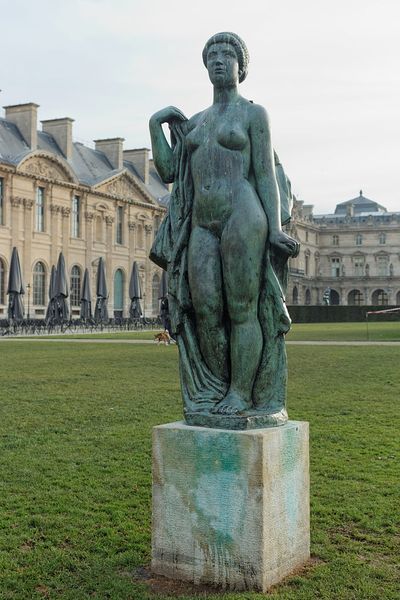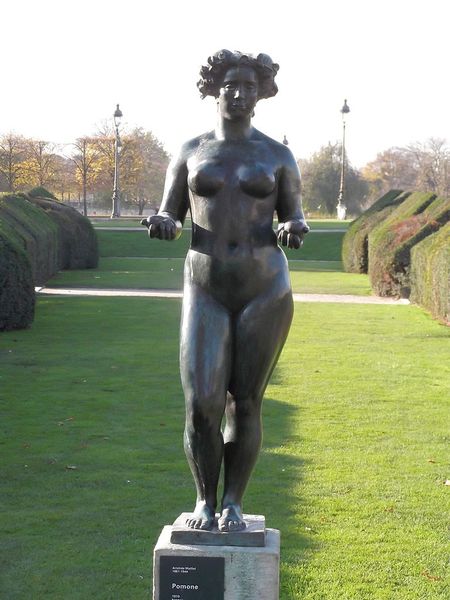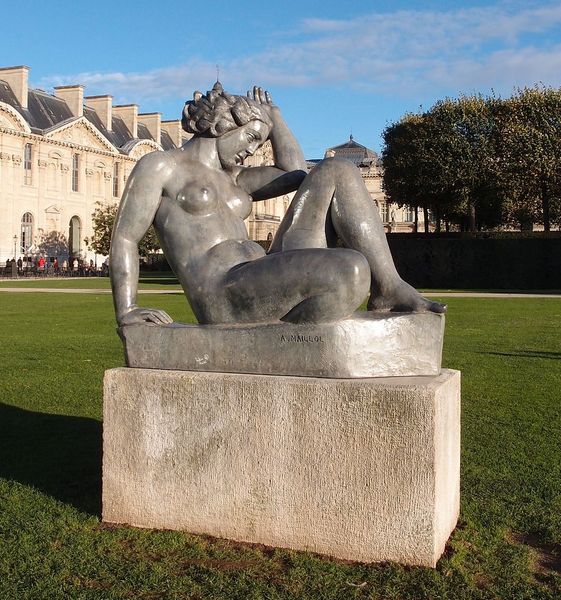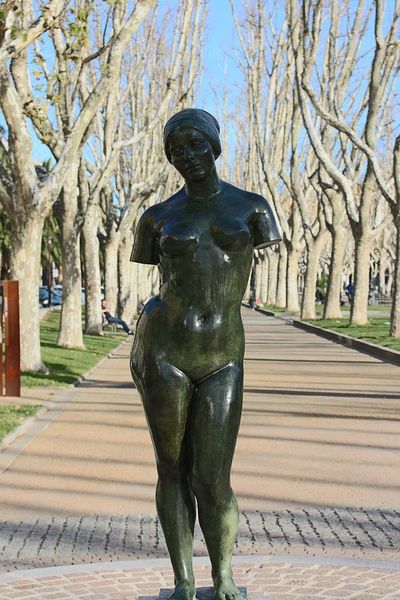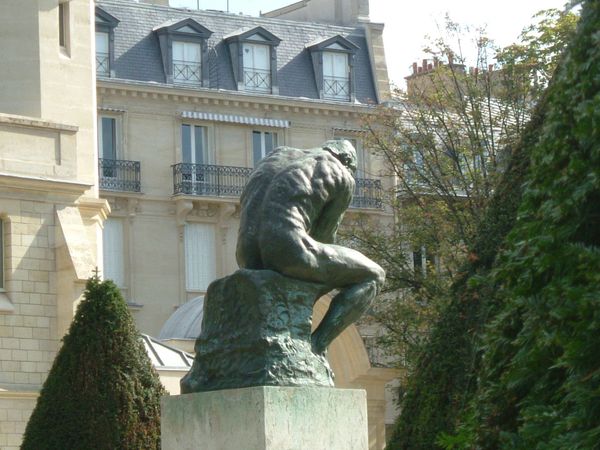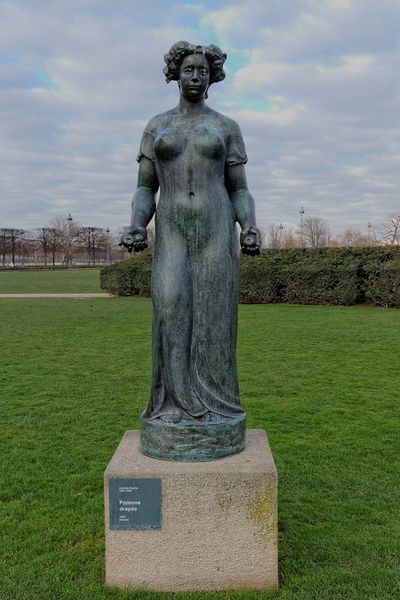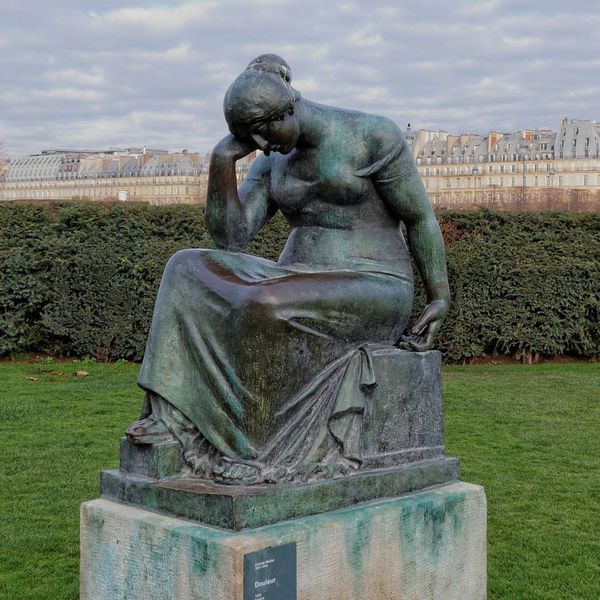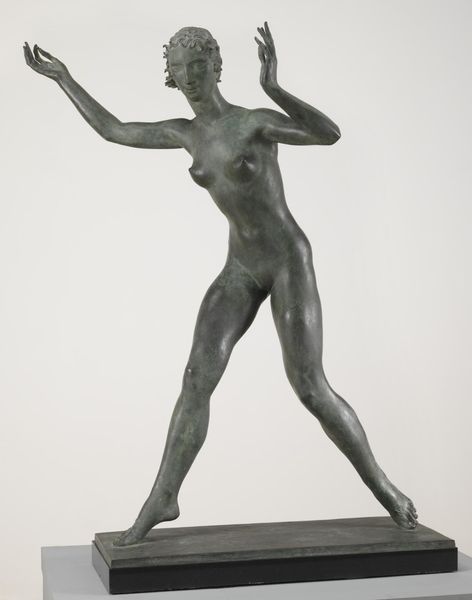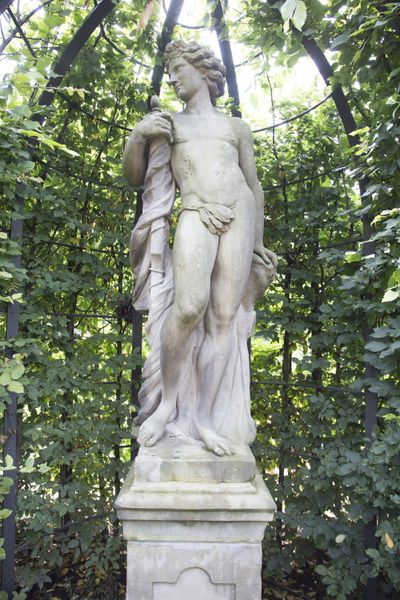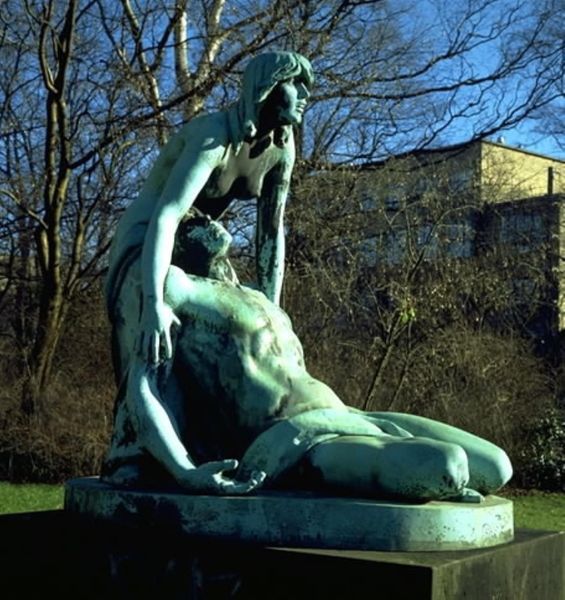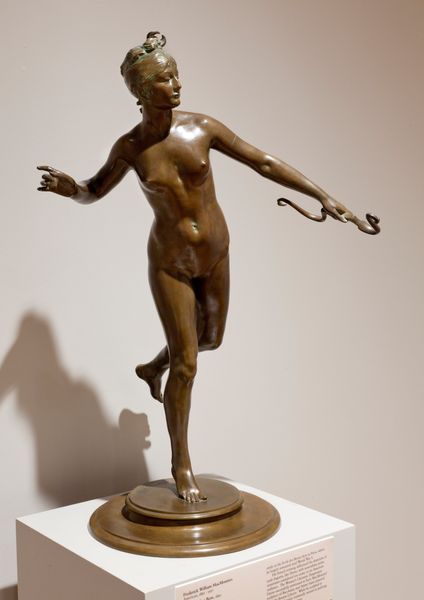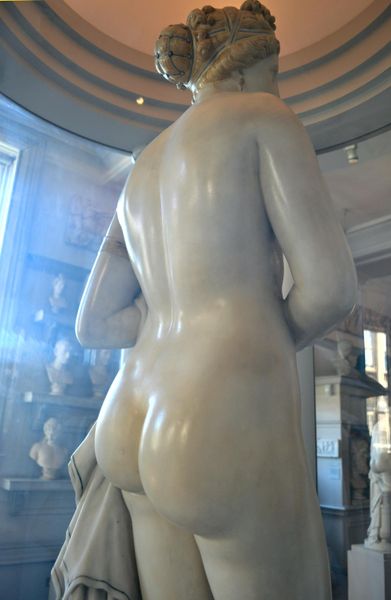
Copyright: Public domain
Curator: Aristide Maillol's "Venus," cast in bronze around 1928, commands immediate attention. It projects an aura of ancient serenity into the modern garden space. Editor: There's an arresting quality about the sculpture’s pose; she holds one hand up delicately, in what looks like both offering and defense. The aged bronze evokes a specific period, even before learning more about the work. It prompts one to consider ideals of the feminine form from various eras, contrasting expectations and stereotypes across the 20th century and before. Curator: Indeed. Maillol was intentionally revisiting classical forms, looking back to archaic Greek sculpture for inspiration. He was part of a broader movement turning away from the avant-garde experimentation of the early 20th century, towards more traditional, idealized representations. Consider the sociopolitical implications of embracing a seemingly ‘safer,’ less challenging visual language during times of great upheaval, such as between the two world wars. Editor: That rejection of the avant-garde also meant a conscious pushback against dominant patriarchal art structures. How can we interpret Maillol’s choice of Venus? And to what extent did his patrons and context normalize this male-gaze version of female representation and idealization of form in public sculpture? And did it exclude narratives by women in arts, during that same period, as part of that return to the classics? Curator: Those are precisely the questions we must consider. I feel the positioning of the sculpture, within an ordered garden also impacts this sculpture; the classical subject gains resonance surrounded by manicured naturalism. It amplifies the ways in which nature and the feminine are codified within cultural constructs of power and aesthetics. Editor: And perhaps by reclaiming Venus, by presenting it as a strong but sensual bronze figure, he intended to empower these feminine qualities during periods of social instability. However we must also be mindful about the legacy of appropriation of images of female bodies to reinforce or subvert societal beliefs. Curator: Precisely. "Venus," cast in bronze, creates that juxtaposition: It engages history and contemporary dialogues by making classical concepts present to us. Editor: It prompts conversations regarding power, desire, cultural memory, as we observe not just the work, but how the artwork exists within history.
Comments
No comments
Be the first to comment and join the conversation on the ultimate creative platform.
